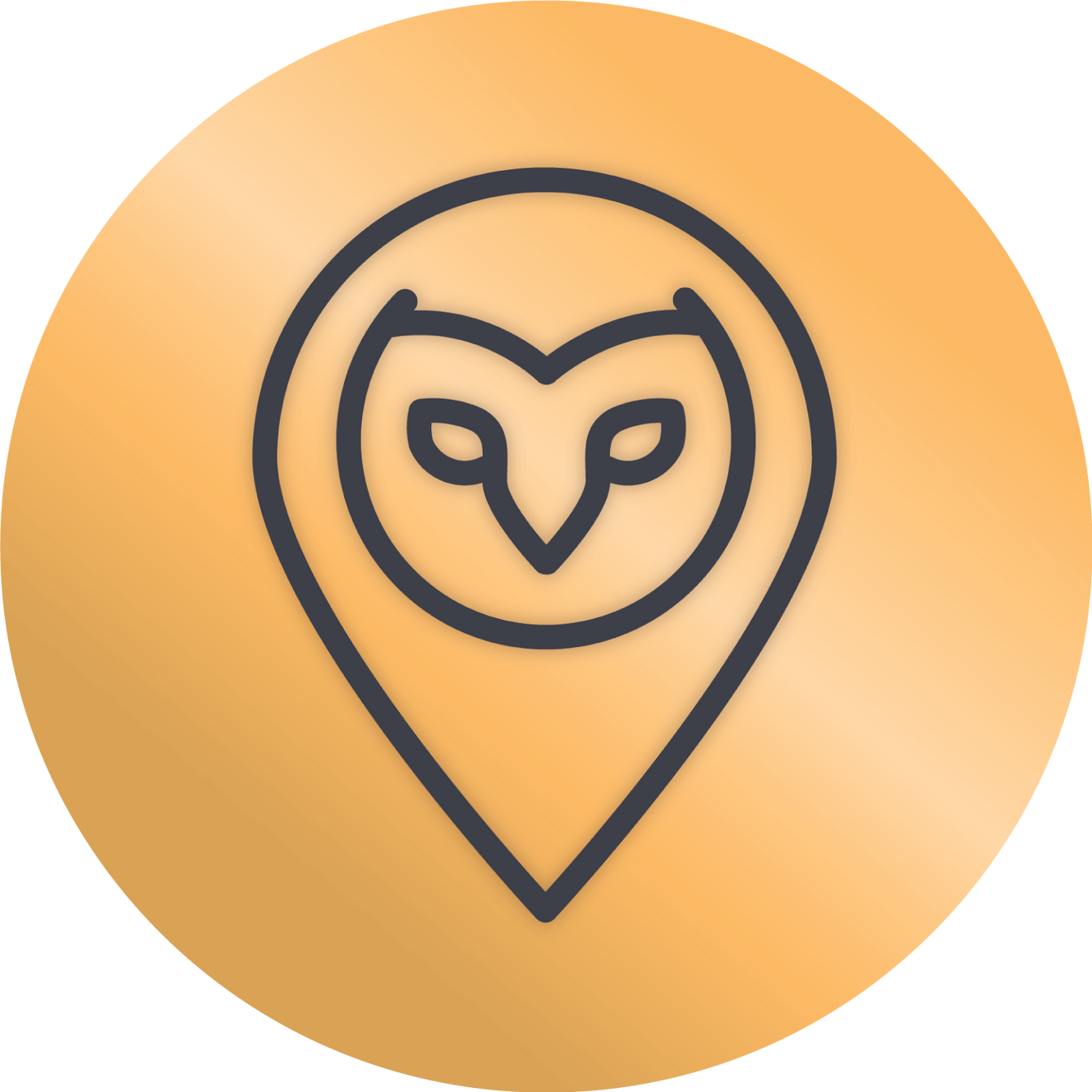
I don't claim to know much about quantum mechanics. I am simply a curious person. This is a relatively random, rambling walk through the aspects of quantum mechanics that I have personally interacted with in some manner. My hope is that it sparks your interest enough to start to investigate this in your own life and get something out of it.
When I was about eleven or twelve, I lived on a small Gulf Island off of Vancouver Island in British Columbia, Canada. The school itself was an alternative school and it had two classes: grades K-2 and grades 3-8, of which I attended. I have fond memories of being made tea and cookies while sitting next to my best friend learning advanced algebra taught by an 80-year-old woman who decided to teach at this local community school. Just being around someone who is so passionate about mathematics, I couldn't help but turn into a sponge learning rapidly advanced topics and finding algebra equations as entertaining as a good crossword puzzle or even a video game at the time.
My science teacher at this school was delightful. He had a wild head of curly hair and relentless enthusiasm for science, even occurring outside of normal teaching hours. For example, at a community event, a bright meteor streaked through the sky, lighting everything up. Seemingly out of nowhere, my teacher appeared and instantly rallied everyone to run across into the field of the nearby school where we could immediately begin sky watching, looking for more meteors. The next day, we contacted the local observatory to inquire about the meteor and find out more information. He introduced me to science in a way that brought me lots of joy. And one thing he introduced me to was this game called "The Black Box.", which helped give me an early understanding of some quantum concepts.
The game involved putting inputs (lasers) into a "black box", an unknowable internal representation and then figuring out how the system worked by deriving the positions of various orbs which were deflecting these hypothetical laser beams.
In many interpretations of quantum mechanics (especially Copenhagen or instrumentalist views), the quantum system is treated like a black box. You don't ask what's really happening inside, only what outcomes you can predict when you make a measurement. Similarly, when measuring electrons you can know the speed, the location and the direction but not all at once. There is always something uncertain.

This game not only helped me understand quantum concepts, but it also helped me understand modern language models when I started working with them. We don't really understand what is happening inside language models, especially as a user and not a machine learning engineer. However, we can derive certain locations or areas of the model which will help our prompting and outputs.
Recently I attended a presentation from Suzanne Gildert at the Vancouver AI meetups that I found particularly intriguing as it investigated consciousness and quantum mechanics. The Vancouver AI community is a vibrant group of people that feels half way in between a burning man camp meeting and a start up conference. The fact that it now takes place at the Macmillan Space Center only adds to the unusual atmosphere. Indigenous speakers open the ceremony with song and prayer, machine learning engineers muse on current news and artists weave dance, music, and visuals together in stunning displays. They happen once a month and feature interesting keynote speakers like Suzanne.
In Suzanne's talk, she described two main features of quantum mechanics, the first of which classical information processing vs. quantum information processing. A powerful known quantum effect is that you can combine lots of information into one quantum state. Once that information is combined, it cannot be split out or seen from its individual parts. I found this very similar to how I perceive my own somatic field of energy around my body. For example, I can view an energy center like the heart chakra separately, but it only makes sense in the context of my whole body of energy. The heart chakra viewed from an intellectual perspective and attempted to be separated out is nothing but a puff of mental energy. It's only when I view it within the context of my own body of energy and my relationship to the universe or all that is that the heart chakra begins to make sense.
This applies as well to many of the more mechanical systems interpretations of energy where the conscious mind, if it attempts to work with the energy, only ends up interfering with the overall body of energy and is not able to separate out the parts. The brain as an organ alone is limited in bandwidth, so in my deduction there must be some external processing happening. It could be the "everything is consciousness" panpsychism, or more spiritual / divine "source" perhaps. I'm not really certain at this point, so I guess you could say I have some uncertainty, or maybe much of spirituality is simply a "black box system" to many of us un-enlightened individuals!
One interesting quality of quantum information processing is that when this collapse of quantum information turns into a classical information, some scientists believe this could explain free will. The brain takes so many sources of information from all of our senses, including not only sight, sound etc but internal proprioception (your bodies position in space), baroperception (internal pressure sensor for blood, fluids, etc) and many other things. To consciously think of these things would take an astronomical amount of time. Like attempting to calculate the the speed of light by looking at tea leaves. However if these quantum information theories are true, the brain would simply take all information in the quantum state and then collapse into free will (as in "I want to move over there now").
Suzanne's talk at the Vancouver AI Meetup
Another quantum effect that is intriguing is the ability to hold multiple positions at once. Classical computers, for example, hold ones and zeros, but a quantum system can hold both of those or an uncertainty between one and zero. There are intellectual and spiritual concepts where the concept can be seen from multiple perspectives, all of which are true. For example, a cognitive dissonance that is helpful in psychology might be the concept of "I love this person" vs. "they hurt me". It's valuable to be able to perceive both of these internal states at the same time. This is the Taoist thinking the concept of "non-dual thinking" or in Zen "the sound of one hand clapping". It is the yin and the yang not seen as separate but as essential to one another. This manner of thinking encourages fluid perception, balance, and acceptance of ambiguity in life and nature.
Immanuel Kant wrote of these ideas in "The Critique of Pure Reason", where he called them antimonies. Kant argued that reason naturally seeks to understand the totality of experience, leading it to formulate ideas such as the unconditioned, the infinite, and the absolute. However, these ideas, when applied to objects of experience, lead to antinomies because they transcend the limits of possible experience.
- First Antinomy:
Thesis: The world had a start in time and is finite in space.
Antithesis: The world has no start and is infinite in both time and space. - Second Antinomy:
Thesis: Everything is made of simple parts.
Antithesis: Nothing is made of simple parts; everything is complex. - Third Antinomy:
Thesis: Nature isn't the only cause; there's also free will.
Antithesis: Only nature causes things; free will doesn't exist. - Fourth Antinomy:
Thesis: There's a necessary being in the world.
Antithesis: No necessary being exists in the world.
Kant resolved these antinomies by distinguishing between phenomena (things as they appear to us) and noumena (things as they are in themselves). He argued that the antinomies arise from applying categories of understanding (such as causality and substance) to objects that lie beyond the bounds of possible experience (the black box). When we recognize that these categories are valid only within the realm of possible experience, the antinomies dissolve.
As human beans, it's in acknowledging this relationship between conflicting parts that we begin to be able to understand. For example, when we think about the political systems, religions, and cultural phenomenon by acknowledging multiple views it opens a gateway to empathy and understanding of others. We hold our own opinions / beliefs and that of another, allowing expression between both parties without resorting to argument or debate.
Suzanne's talk was relatively straight forward and direct. However it made quite an impact on how I perceive the future of quantum computation and ways in which we already interact with quantum states on a daily basis. In some other interviews she has on her Youtube channel for Nirvanic.AI, she goes into much much greater detail. Personally it inspired me to learn more about quantum mechanics and gave me optimism for the potentials with quantum technology. It also gave me a new perspective on some of the energetic phenomenon I have encountered in my spiritual studies.
There's some quantum technology I have used which is available today, accessible via your phone via an app or to use in your applications via an API. I'll go over a few of them:
Quantum Technology in Daily Life
Randonautica
Randonautica is a mobile app that uses quantum principles to help with exploration and adventure. The app is pretty simple: you mentally set an intention without saying it out loud or writing anything into the app, you just think it. The app then uses a quantum computer to derive random points, which it places across a map of your area. The points then get split up into attractors, which feature a high number of points, voids, which feature an absence of points, and anomalies, which is the strongest of the two. You then go to the location and, using your investigative senses, find how your intention shows up at this location.
I found Randonautica to be pretty good at providing the initial intention in the locations I visited! It did require some "open-minded improvisational awareness", which is not something that everyone is comfortable with. But in the process of using the app, I found it had a very high hit rate based on the initial intention. For example, an intention of peace brought me to the edge of a lake at sunset. I had never seen this lake; it was quite beautiful and serene, and I was filled with a sense of peace on arriving at that location.
To me, the most impactful and obvious encounter with Randonautica was when I was realizing that I had been setting kind of vague intentions, and so I wanted one that would specifically be challenging to discover. Given that I was in the deserts of Arizona, I decided to set the intention to dolphins. I set the largest radius and drove in that direction of the strongest anomaly. There was an off-ramp that I had to take to get to the location, and once there, I pulled into the parking lot ready to disembark and find exactly what was at this point. But as I stared out my front window, I realized I didn't need to...in front of me were a bunch of turned over rowing practice boats which all had their fins pointing in the air like a school of dolphins.
One particularly interesting aspect of Randonautica was its evolution as people began to use the app. In the beginning, there was a lot of theory online, posted by users and by the organization itself, including white papers and research. However, all that disappeared at a certain point. As the younger generation started using Randonautica, they began to treat it like a Ouija board and would put increasingly dark intentions into Randonautica to discover as a means of finding thrills or spooking themselves. I wonder if this began to pollute the pathways of Randonautica because at a certain point, a terrible thing happened.
Some teens decided to set the intention of travel, and they were documenting their Randonautica explorations through TikTok. They set the intention and began walking, and the point that they got took them towards the beach. As they walk there, they excitedly relate to finding a suitcase. However, the very next TikTok video, their in tears as a cop car is nearby and it's later found out that they found a bunch of chopped up body parts in this suitcase!

In doing some research I see since then they do have a book and some other posts that can still be found online. Of particular interest is the Fatum Project which relays a bunch of interesting concepts (like planeshifting, genesis fields, and other super cool sounding probability memetics) if you're interested in researching further.

Fatum Project Theory
by in UnitiveConsciousness
Universe Splitter
Universe Splitter is another app for quantum randomness, or as it describes it, for quantum-induced universe bifurcation. The idea is to essentially do a quantum coin flip where in one universe you will now take one action and in the other you will take another action. It creates a chart that tracks all the choices that have been put to the universe splitter and it tracks all of the splits.
The universe splitter uses a QUANTIS brand quantum device which is certified by the National Meteorology Institute of Sweden, which sends individual photons towards a partially silvered mirror so that each photon will have two possible paths. Scientists say the photon will take both paths, but in separate universes.
ComfyUI Quantum Randomness Node
Given my interest in randomness, I was particularly fascinated with how AI image generation would use a random number generator, either from the CPU or the GPU of the computer or server that the image was being generated on. So I designed a ComfyUI node that would pull the Australian National University Quantum Randomness API, where it would be provided a set of numbers that were generated from background entropy of a laser operating in a vacuum, so essentially the background entropy of the universe. This was a very over-engineered solution, but quite entertaining to me personally. When you need a random number, why not go for the most intriguing method?
This process of making a comfy UI workflow led me to theorize on interactions that humans will have with quantum systems. Will our intentions drive the responses of prompts to language models? This would be akin to some sort of computer telepathy. Perhaps this will be an alternative to direct implantation of a cybernetic device within the brain. Instead, having systems be intention-based, you may not get the exactness of an implanted device, but you would get close enough without the invasive technology.
What is the future of using AI running on quantum computers? Will our intentions change the input to the AI and its subsequent response? Will this open up telepathic interaction with quantum computers? Will uncertainty, chaos, and randomness drive innovations in the AI industry? Only time will tell.

